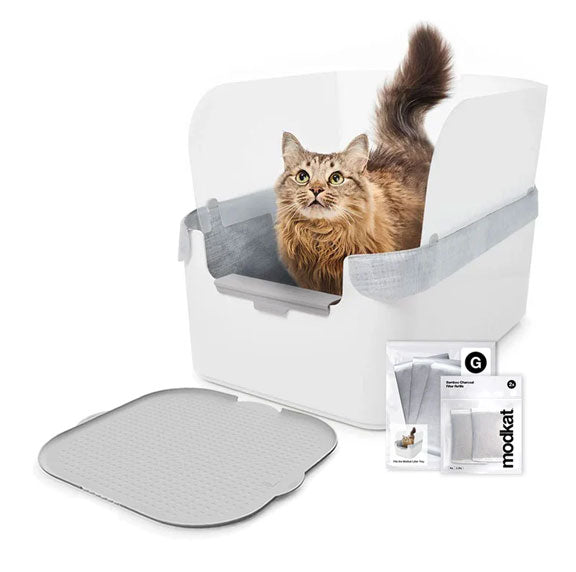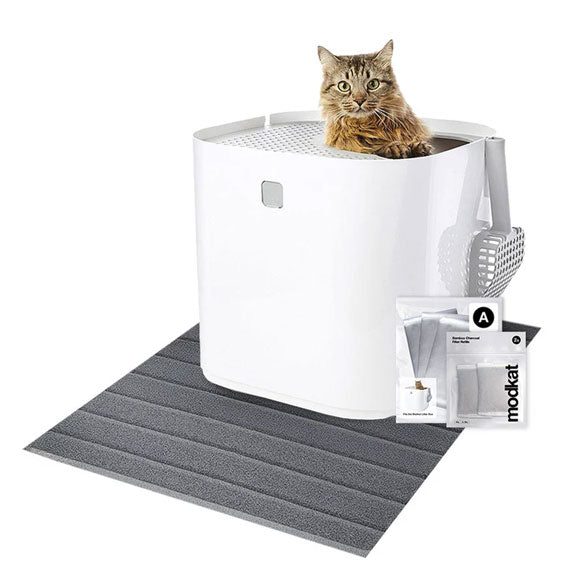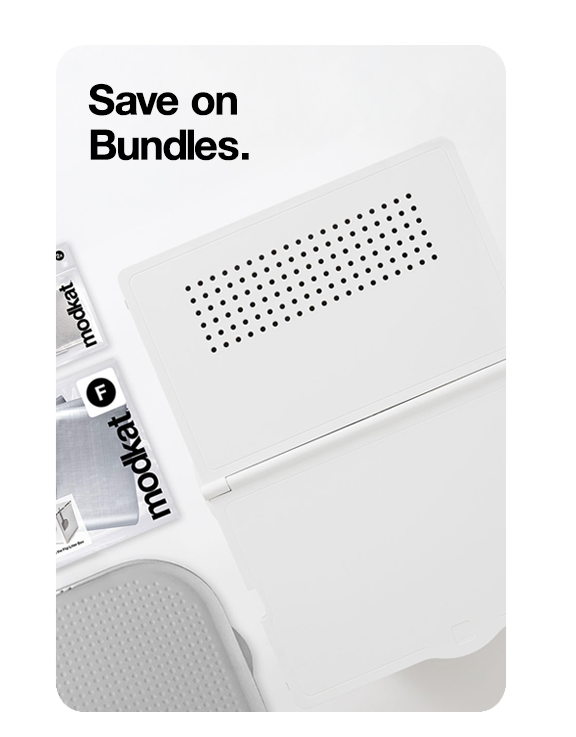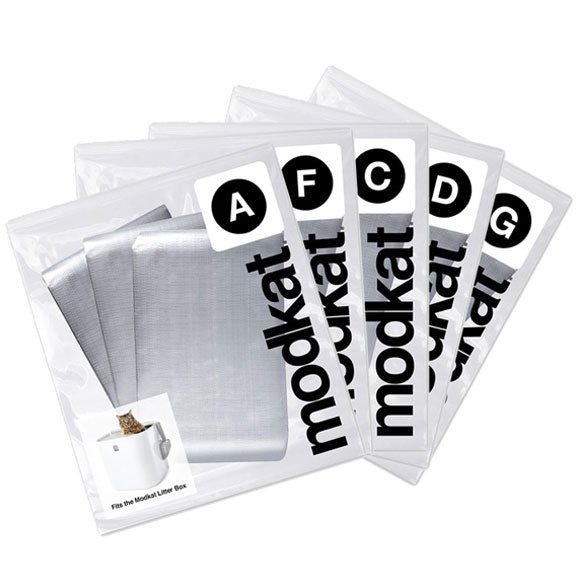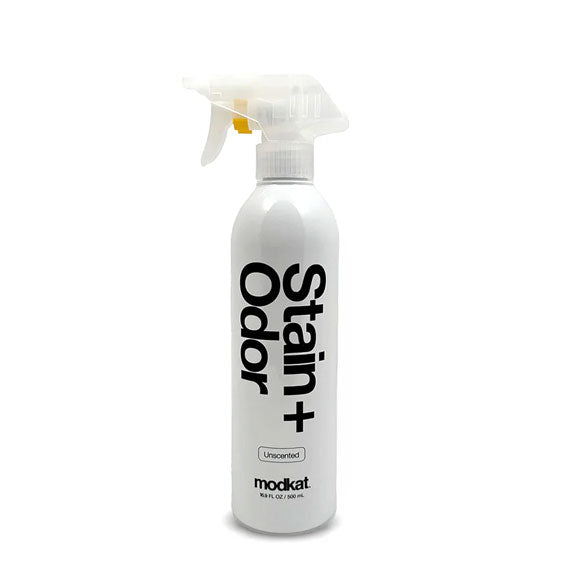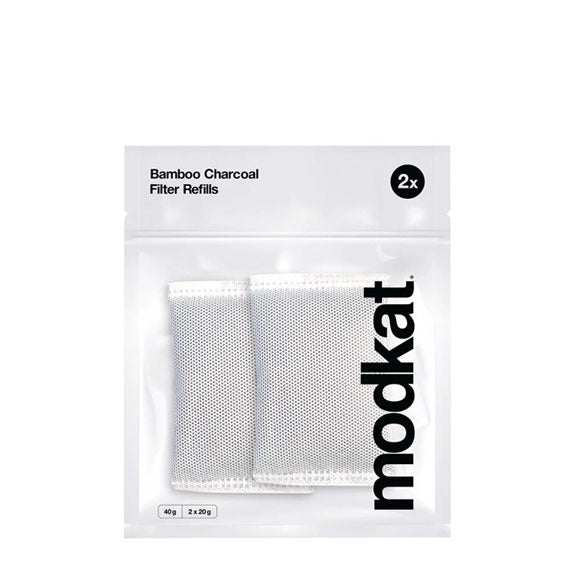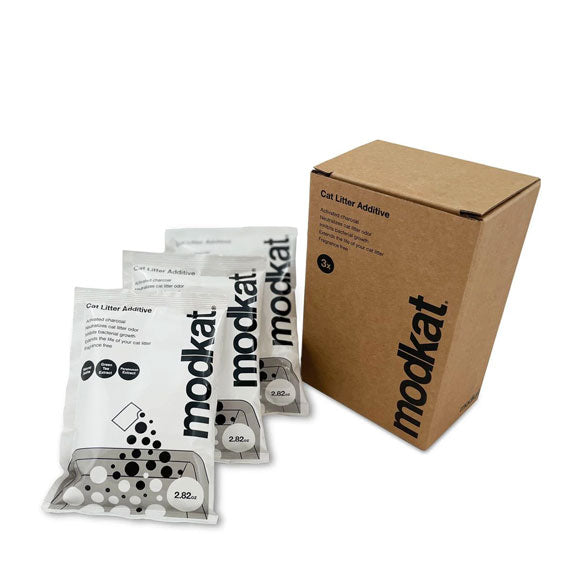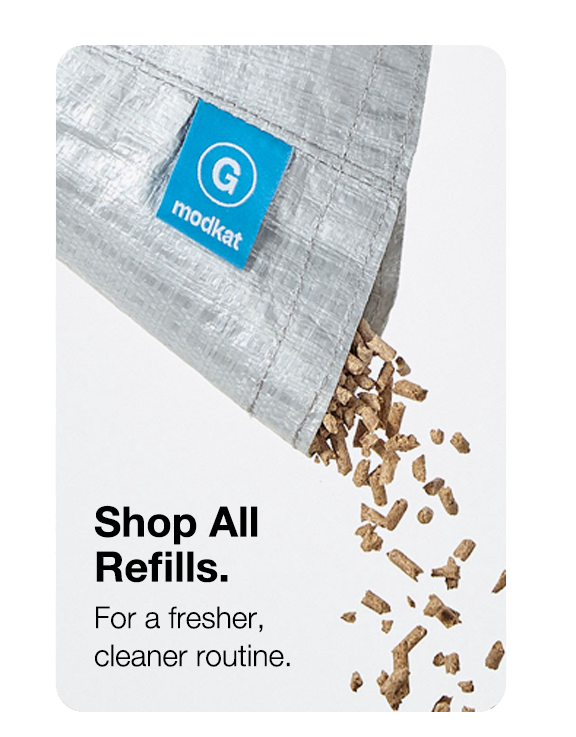20% off sitewide. Discount automatically applied.
20% off sitewide. Discount automatically applied.
Litter Boxes
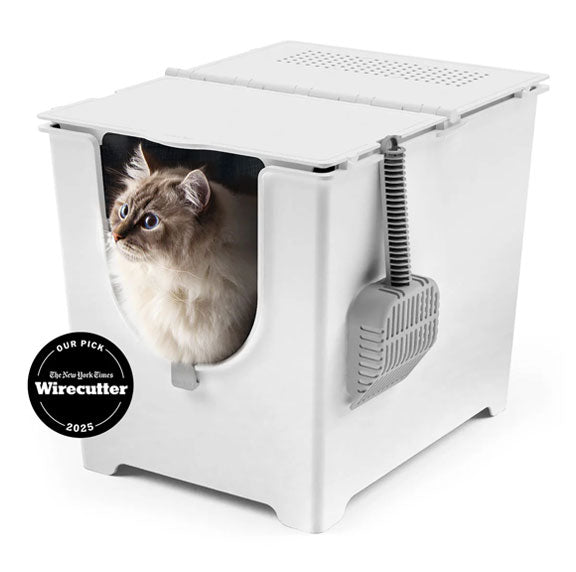
Modkat Flip
Front-Entry Litter Box

Modkat XL
Front/Top-Entry Litter Box
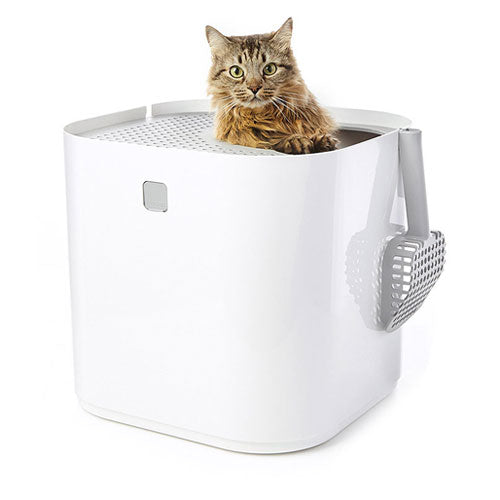
Modkat
Top-Entry Litter Box
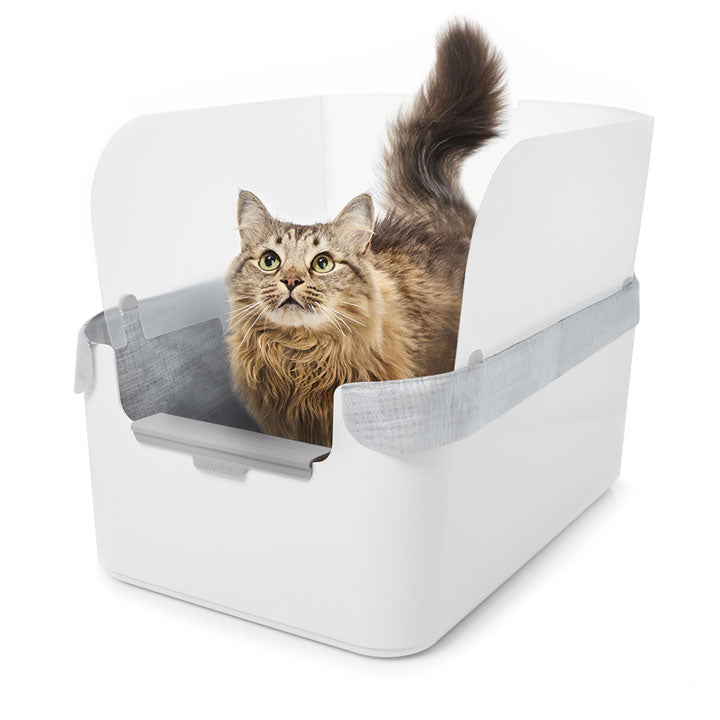
Modkat Tray
Open Litter Box
Bundles
Essentials

Litter Keeper
Two colors
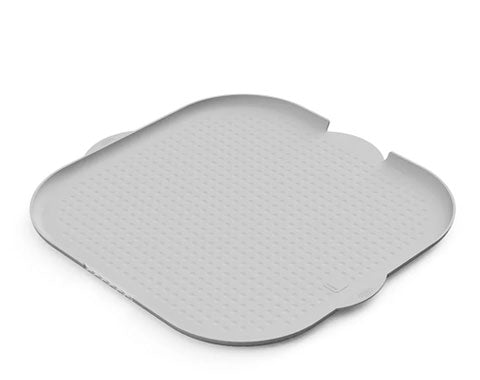
Litter Mats
Multiple styles, colors & sizes
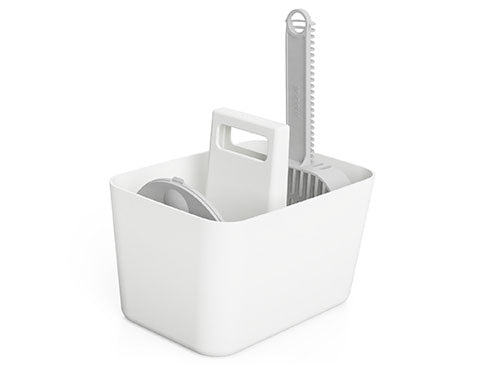
Tidy-Up Kit
Scoop holder & dustpan
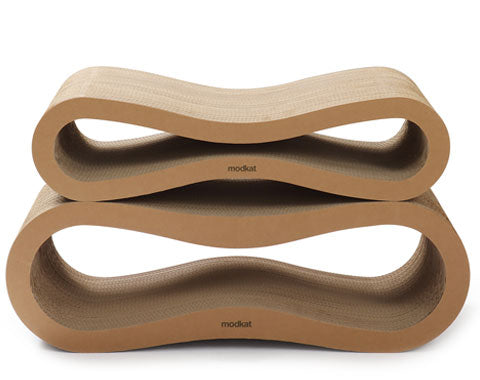
Lounge + Play
Scratchers & toys
Refills
Add description, images, menus and links to your mega menu
A column with no settings can be used as a spacer
Link to your collections, sales and even external links
Add up to five columns
Add description, images, menus and links to your mega menu
A column with no settings can be used as a spacer
Link to your collections, sales and even external links
Add up to five columns
Comparing traditional litter boxes with self-cleaning solutions.
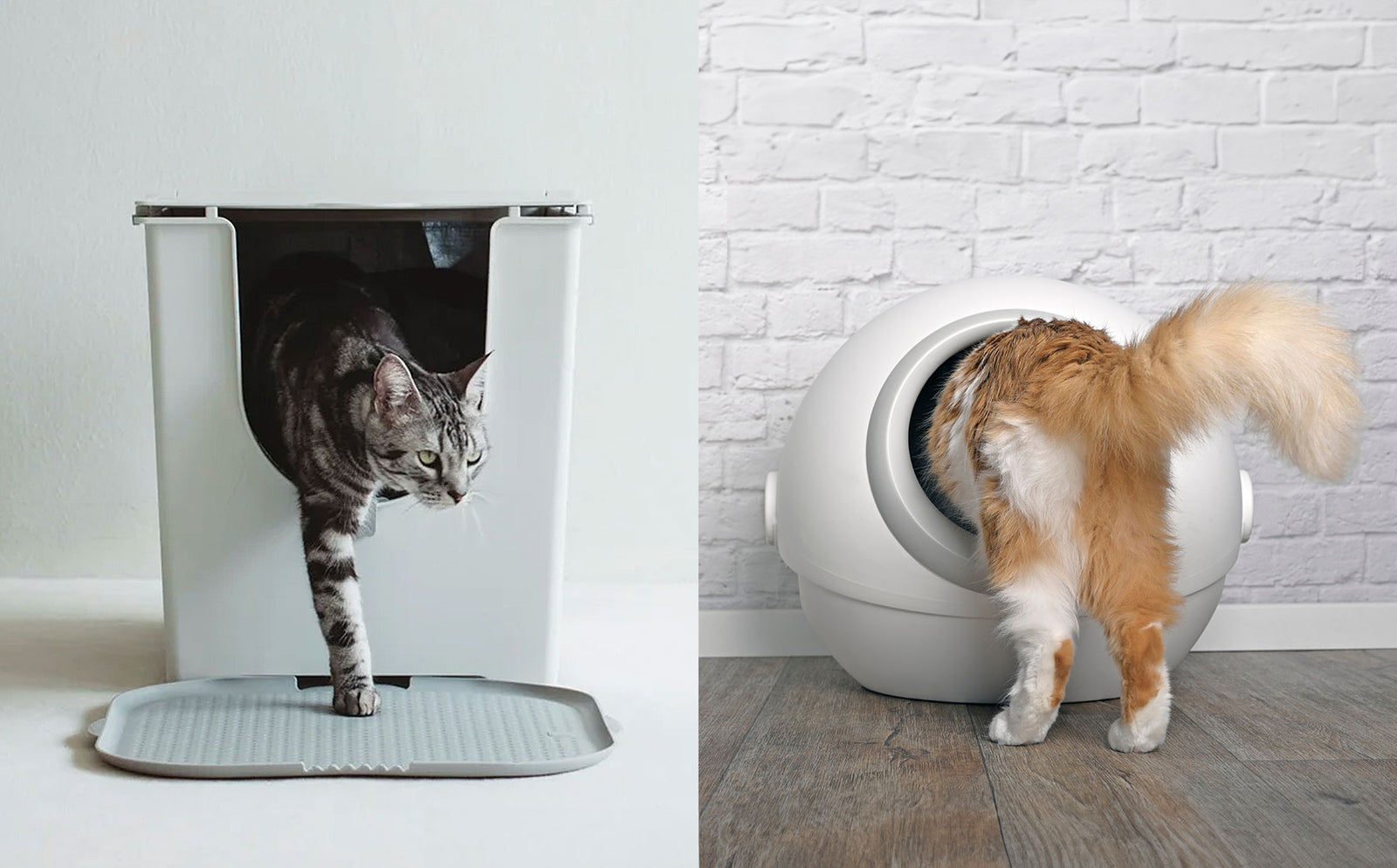
Automatic, self-cleaning litter boxes are a popular topic online. Some cat owners endorse them, while others warn that these litter boxes can be prone to malfunctions, difficult to clean, and even traumatic for their pets.
So, what's the real scoop on robotic litter boxes?
In this article, we look at the pros and cons of both traditional and automatic litter boxes, evaluate the costs and benefits of a self-cleaning cat box, and provide you with a checklist for choosing a new litter box.
Different Types of Litter Boxes
For most of history, house cats simply meandered outside when they needed to do business. In the early 1940s, however, the E-Z Klean Kitty Toilet appeared on the market.
Consisting of a paper-lined enameled metal pan and an optional privacy screen, this device was filled with sand or ashes to soak up the goods that cats deposited. Though the kitty toilet largely failed to impress as a pet product. Cat waste was too pungent to allow indoors without odor-absorbing litter to help cope with the mess.
In 1947, Michigan businessman Edward Lowe and his neighbor Kay Draper stumbled onto a solution — clumping clay. Lowe put his money and ingenuity behind their discovery, and so by mixing absorbent litter with a scoopable container, the modern cat litter box was born.
Cat boxes largely remained the same for the next 40-plus years until the first self-cleaning litter box was patented in 1991.
What is a self-cleaning litter box?
A self-cleaning litter box is an automated device designed to reduce the manual cleaning required for cat owners. These litter boxes use sensors, timers, and mechanical rakes or scoops to automatically sift through the litter, removing waste and depositing it into a separate compartment.
The idea is that this will keep the litter box cleaner longer and minimize the owner's need to scoop out waste manually. Some advanced self-cleaning litter boxes also have features like odor control systems, washable parts, and connectivity to smartphone apps for monitoring.
What is a traditional litter box?
A traditional litter box is a covered or uncovered container cats can visit when they need to go to the bathroom. Cat caregivers are responsible for manually scooping out the waste and cleaning the litter box regularly to maintain hygiene. Traditional litter boxes come in various shapes and sizes, with some having features like lids or high sides to contain litter scatter.
The Pros & Cons of a Self-Cleaning Litter Box
With the introduction of the self-cleaning litter box and its growth in both ad space and technological gadgetry, it's time to take a closer look at what this box can offer. And make no mistake, a self-cleaning litter box has pros and cons.
Pros of a Self-cleaning Litter Box
- Consistency: Ensures the litter box is cleaned consistently, regardless of the owner's schedule or forgetfulness.
- Reduces Tracking: Some designs help minimize the amount of litter tracked outside the box by cats.
- Smart Features: Many self-cleaning litter boxes are connected to smartphone apps, allowing remote monitoring and management.
- Ease for Cat Caregivers With Disabilities: Makes pet care more manageable for individuals with physical limitations.
Cons of a Self-cleaning Litter Box
- Cost: Generally more expensive than traditional litter boxes, both in terms of initial purchase price and maintenance costs.
- Noise: The mechanical components can be noisy during operation, potentially disturbing pets and people.
- Mechanical Issues: Prone to malfunctions or breakdowns, the techie part of the boxes may require repairs or replacements.
- Learning Curve for Cats: Some cats may be frightened by the noise or movement of the self-cleaning mechanism and may refuse to use the box.
- Limited Litter Types: Often restricted to specific types of litter, limiting the caregiver's choice and potentially increasing ongoing costs.
- Cleaning Complexity: When the box does need to be cleaned, the process can be more complicated compared to a traditional litter box.
- Maintenance Costs: Ongoing costs for replacement parts, special litter, and other consumables can add up over time.
- Power Dependence: Requires a power source, making placement more restrictive and non-functional during power outages.
- Size and Space: Generally, large and bulky compared to traditional litter boxes, requiring more space but offering smaller interiors for cats to move around inside.
- Not Foolproof: May still require occasional manual scooping if the device misses waste or if there are malfunctions.
Do Self-Cleaning Litter Boxes Work?
Self-cleaning litter boxes "work" in the sense that they provide a place for your cat to do business. Unless they’re on the fritz for some reason, they generally do what they claim to do—clean themselves.
However, these boxes often don't "work" in the sense that they can frighten cats, dominate the room's decor, and cost a lot of money to purchase and maintain. And then, of course, you still have to get your hands dirty with emptying, cleaning, and refreshing the box.
The Pros & Cons of a Traditional Litter Box
Pros of a Traditional Litter Box
- Cost-Effective: Significantly cheaper upfront compared to self-cleaning litter boxes.
- Simplicity: No mechanical parts or electronics, making it easy to use and maintain.
- Versatility: Compatible with a wide variety of litter types, allowing cat caregivers to choose what works best for their cat.
- No Power Needed: Can be placed anywhere without needing a power source, making it more versatile in terms of location.
- Low Noise: Completely silent operation, which won't disturb cats or people.
- Ease of Cleaning: Simple to clean and replace the litter, with no intricate parts to deal with.
- Durability: Fewer components that can break down or malfunction, often resulting in a longer lifespan.
- Space-Efficient: Available in various sizes, including compact designs that can fit into smaller spaces.
- Cat-Friendly: No moving parts or noises that might scare cats, making it more likely that cats will use it comfortably.
- No Maintenance Costs: No need for replacement parts or special consumables, reducing ongoing expenses.
Cons of a Traditional Litter Box
- Limited Features: Lacks advanced features like odor control systems or smart monitoring.
- Multiple Cats: Can be challenging to maintain hygiene in a multi-cat household without very frequent cleaning.
- Litter Management: Requires regular litter changes and disposal, which can be cumbersome.
- Inconsistent Cleaning: Depends on the owner's diligence, leading to potential periods of inadequate cleanliness if not attended to regularly.
How do I keep my cat from tracking litter everywhere?
Litter tracking happens when pebbles of litter cling to kitty's fur or paws after she leaves the box, and then they get dropped wherever she goes. It's similar to litter scatter, which happens when cats who like to dig and scratch as part of their bathroom routine toss litter out of the box.
You can prevent litter scatter by choosing a covered litter box. Litter tracking can be reduced by keeping your cat groomed and your litter box clean. Modkat helps you nearly eliminate litter tracking with our specialized mats that pull the litter from cats' paws.
How often should you change out all the kitty litter?
Litter boxes should be scooped after every use or at least once daily. Add enough fresh litter to keep a depth of about 1 inch in the bottom of the box.
You should completely change out all the kitty litter at least once every one to two weeks. Empty the used litter into a trash bag, tie it up, and put it in the trash. Be sure not to add used litter to the compost heap or to flush it down the toilet as both those forms of disposal can make people and wild animals very sick.
Finally, wash out the box with hot water and a safe soap before refilling it to 1 inch depth with fresh, environmentally friendly litter.
Is a self-cleaning litter box really less work?
A self-cleaning litter box isn't a set-it-and-forget-it solution. It's still a lot of work. What you have to do — and how often you have to do it — boils down to what kind of robotic box you buy. Some boxes clean by sifting the litter, others by sweeping it, and still others with a "flushing" mechanism.
While the boxes differ in their specifics, you still have to empty the tray, replenish the litter, and keep the box clean.
Are self-cleaning cat litter boxes worth the cost?
Self-cleaning cat litter boxes can cost from $200 to $1,000 — far more than even the priciest traditional boxes. What's the ROI on all this advanced technology?
That depends on whom you ask. First, most pet-product ranking sites suggest that you not buy any robotic litter box that costs less than $500. Cheaper boxes provide very few benefits and are made of low-end materials that don't last long.
After you've spent the $500 to $1,000 for your product, you'll still have to buy litter and other cat supplies. And you still have no idea if your cat will even feel safe using the box.
Is the Automatic Cat Litter Box Safe for Cats?
If you follow the instructions and keep your self-cleaning box in good repair, then it is probably safe for cats. However, senior cats, kittens, large cats, cats with disabilities, and cats with anxiety probably will not do well with a robotic box.
Are automatic litter boxes bad for cats?
Many sites online provide automatic cat litter box reviews, and cat lovers are often divided about whether or not self-cleaning litter boxes are bad for cats. Many experts, however, look askance at any litterbox that contains mechanical parts.
The New York Times Wirecutter does not recommend automatic cat boxes. Instead, they have identified the Modkat Flip Litter Box as their top choice for a litter box upgrade. Cat expert Jackson Galaxy also disapproves of these techno-boxes. "From the risk of potential malfunctions to the dangerous stripping away of your ability to monitor your cat’s health," Galaxy says, "in my opinion it’s just not worth the risk!"
Can a cat be traumatized by a self-cleaning box?
Yes, a self-cleaning box can traumatize your cat. Some kitties are frightened by the noise or the movement the machine makes. Others have a history of trauma, and the mechanical sounds of the machine can call up old memories. Cats remember surprisingly well for non-primate animals.
A frightened or traumatized cat may show certain behavioral characteristics — most notably litter box avoidance. If you have a robotic box, and your cat is doing business in inappropriate places, first ask your vet to test for an infection. Then try replacing your automatic box with a traditional one. Almost certainly, your cat's litter box problems will disappear.
How to Choose the Right Litter Box for Your Cat
Selecting the ideal litter box for your cat involves considering various factors to ensure both your pet’s comfort and your convenience.
Here are key points to guide your decision:
- Adequate Space: Ensure the litter box is large enough for your cat to turn around comfortably. Generally, a box should be 1.5 times the length of your cat from nose to butt about as wide as the cat is long. Big cats need extra large litter boxes, and small cats need easy-to-access doorways.
- Covered vs. Uncovered: Studies show that most cats will use either a covered or uncovered box, and many prefer the covered variety. Covered boxes provide privacy and help contain odors and litter scatter, but uncovered boxes offer easy access and are generally more acceptable to cats.
- High-Sided Boxes: High sides can help reduce litter scatter, especially for cats that like to dig vigorously. They're also a good way to prevent high pee-ers from sprinkling the rug.
- Non-Tracking Mats: Place a non-tracking mat outside the box to catch litter from your cat’s paws, reducing mess and making cleanup easier.
- Beveled-Edge Scoops: Invest in a quality scoop with a beveled edge to make it easier to sift and remove waste efficiently from the corners of the box.
- Smooth Surfaces: Boxes with smooth, non-stick surfaces are easier to clean and maintain.
- Minimalistic Design: Choose a design that fits seamlessly into your home’s décor. Minimalistic designs in black, white, gray, or blue are often less obtrusive and can blend in with your furniture.
- Multiple Boxes: If you have multiple cats, ensure you have enough litter boxes—ideally, one per cat plus an extra. This reduces territorial issues and keeps the boxes cleaner.
- Odor Control: Look for boxes with built-in odor control features or use high-quality, clumping litter to minimize smells.
By considering these factors, you can choose a litter box that meets your cat’s needs while maintaining a clean and pleasant environment in your home.
Modkat provides stylish and functional litter box solutions for cats of all sizes.
“It looks nicer than any other hooded or open option we considered.”

Categories
Meow from Brooklyn.
Sign up and get early access to product drops, exclusive offers, and the occasional cat meme.
Similar products related to this blog:
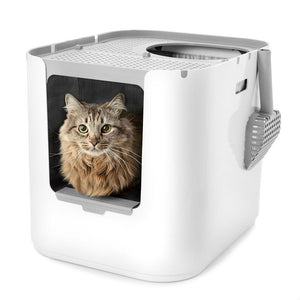
"It looks nicer than any other hooded or open option we considered."

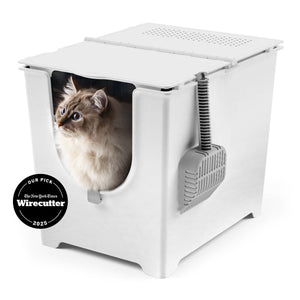
"This litter box keeps everything in, nothing gets out the sides."

"My beautiful ragdoll cat and I both love the new Modkat Litter tray!"


